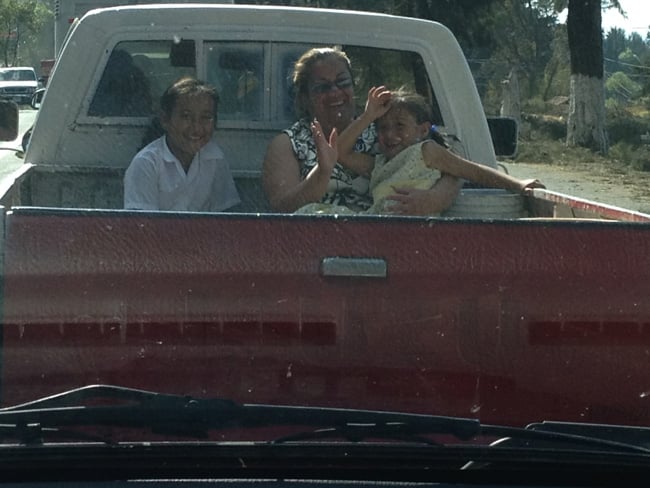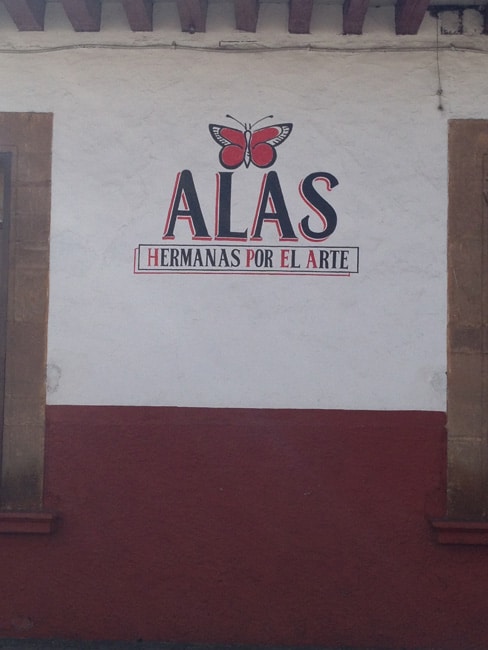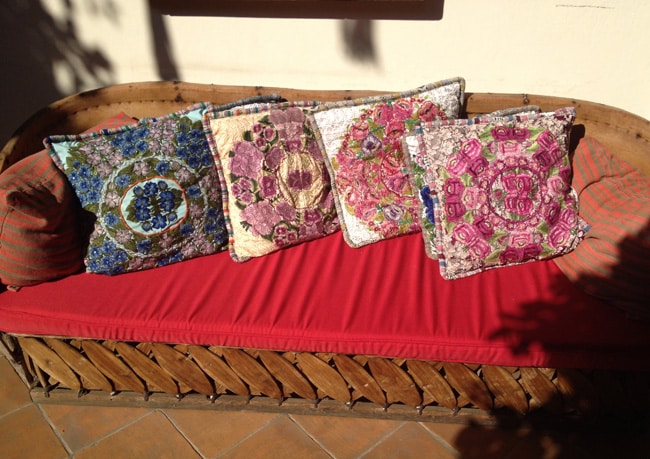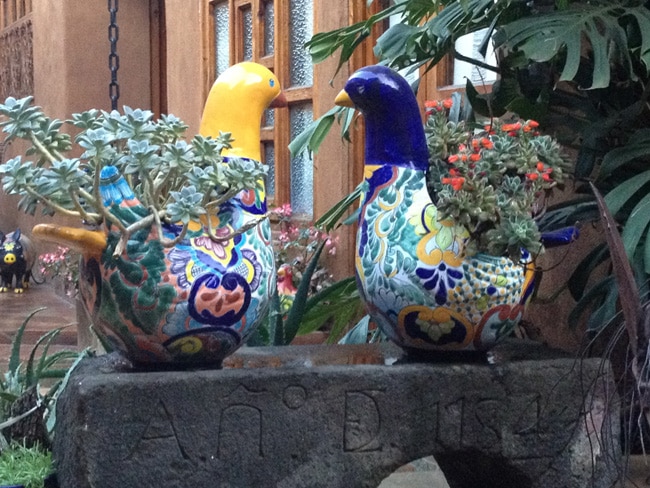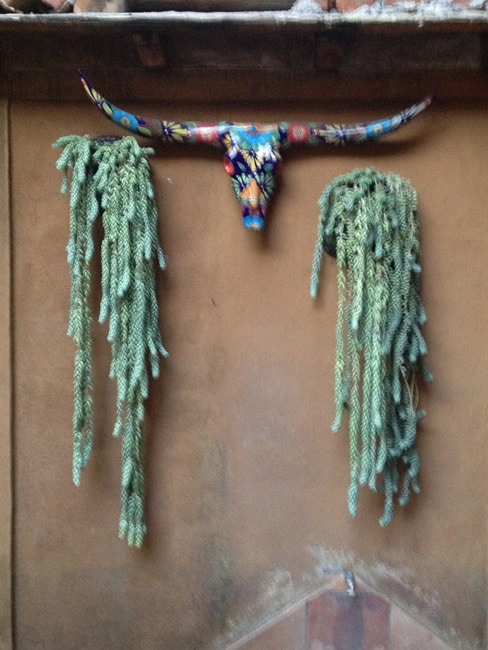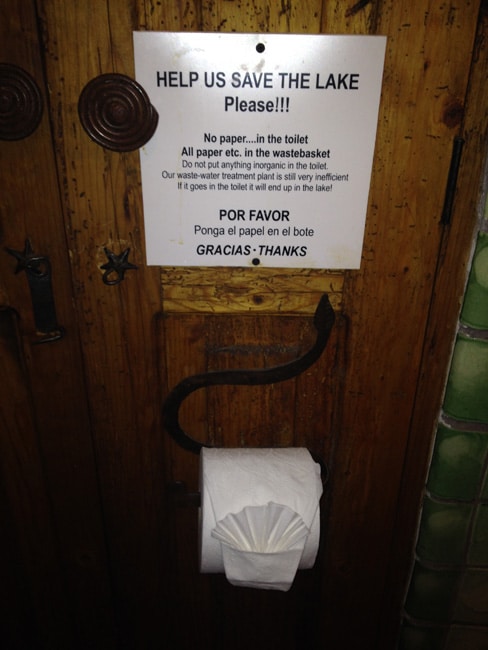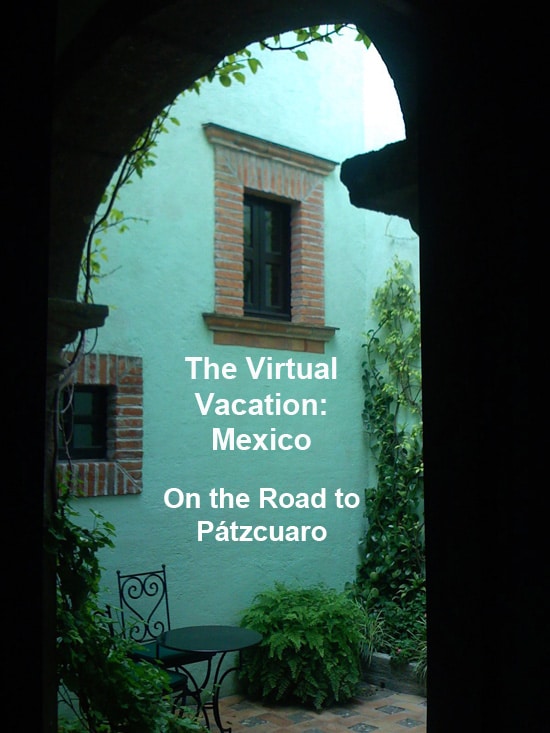
At the end of last year’s writer’s conference, I spent one night with my friends Richard and Suzy before flying home, and that night we cooked up the idea of going on a little road trip at the end of this year’s conference. It’s demoralizing to work so hard and be so exhausted only to fly home and immediately start working all over again. Although I miss my family and really want to see them, I’m happy I gave myself these days to see another part of the “real” Mexico, to relax, and to have a little vacation before returning home.
Richard and Suzy picked me up around noon today and we shoved my huge suitcase (so huge it’s worth making lots of jokes about) into the back of the car and I climbed in beside it. I felt dwarfed in its shadow.. Next thing, we were on the road—it was going to be four hour drive to get to our destination—Pátzcuaro, an small well-preserved colonial town famous for its artisans, in the highlands of Michoacán. Indigenous people from the surrounding areas come into town to sell their wares.
While Richard drove, I pulled out my small spiral notebook and took note of some of the odd and quirky things I saw along the road—just like I teach all my students to do when traveling. I quickly filled many of the small spiral pages—everything was new to me. Beginner’s mind—the best thing for a writer!
A man bicycled by with a 50-pound bag of carrots perched behind his seat. A tiny chapel, consecrated to Judas Tadeo, one of Jesus’ twelve apostles, stood by the side of the road painted florescent lime green and bright yellow. Two dogs, skin and bones, ran across the road.
When we had to slow for a speed bump—called a tope here—also known as a “sleeping policeman,” a man in a wheelchair with exceptionally small feet ,was sitting right in the middle of the road selling lucky rabbit’s feet key chains. I guess it was a good spot to collect money because people have to slow down.
He wasn’t the only one selling things in the middle of the road—or along the sides. One woman sold huge stand-up balloons the size of a person. Another cart sold nothing but huge brown globes of jicama.
An hour or so into our trip, Suzy pulled a small plastic box out of the glove compartment, called a Chat Pack: Fun Questions to Spark Conversations. She selected a card from the box and the question was, “What is the most incredible weather event you’ve ever been through?” It was just like a writing prompt! And we passed some of our drive sharing our extreme weather stories.
As we drove south toward Celaya, the landscape changed from dry and dusty to a rich green. Suzy said there were irrigation channels along the side of the road. We passed fields of alfalfa, asparagus, chard, cabbage, broccoli, and nopal cactus—curated both for medicine and food. Yonke signs peppered the side of the road—Spanish for junkyard.
At one point, we managed to take a wrong turn and pretty soon we were on a very rural dirt road. A dust devil skipped in front of us and a water truck drove by wetting down the road to keep the dust down. But then the road got smaller and smaller, and pretty soon we were the only ones on a very rough agricultural road sandwiched between fields. There were no houses, no stores, no people, just this dusty, rutted, bumpy road and fields. Suzy was sure we’d made a mistake and wanted to turn around. Richard wanted to keep going; he was sure we would run into the road we were looking for. I kept my mouth shut in the back seat. We consulted with a map, a print out of directions from the Internet (now useless—we’d already left that pathway long ago) and a GPS. I couldn’t imagine this road leading anywhere but to a dead end, but Richard was convinced it would lead to a major road eventually.
Out of nowhere, a yellow school bus drove past us—the only other vehicle on this bumpy, road. When it passed us, I looked in the windows—it was full of adult men, not children. Were they being taken to a job site? Or to prison? We had no idea.
Fifteen minutes later, our unnamed dirt road deposited us on a major highway and Richard was vindicated. We were now on Route 45 heading toward Salamenca and Irapuato. It was a relief to be on a paved road. Soon we were sailing along at 110 km/hour, breezing past dozens of signs, hand-painted on whitewashed walls, advertising upcoming concerts, businesses, restaurants, car dealers, and political campaigns.
Off on the right side of the road was an immense tire—probably 35 feet high. We imagined being squashed to death if it somehow came loose from its moorings and careening toward us onto the road. We were certain it was real and made of rubber, but as we passed it, we could see that it was a big thin piece of wood or metal, expertly painted to look like the real thing.
A chain of Happy Go roadside stores dotted the highway, each one proclaiming proudly, “Banos Impecables,” impeccably clean bathrooms. When we needed gas, we pulled into one and got to check out the claim for ourselves. I emerged from the bathroom certain it smelled like toxic cleaning products squared. Suzy called the smell, “caustically floral.”
Since my credit card had failed to work at the gas pump, I spent most of my cash and went to the ATM to get some more. It took me a while—and a lot of guesswork—to navigate the screens in Spanish and when I finally succeeded and the screen asked how many pesos I wanted, I didn’t know what to ask for—I couldn’t convert the currency in my mind fast enough to have any idea what I was asking for. I figured I was paying a hefty fee for the transaction here at the ATM machine as well as one at my bank at home, so I pushed the button for the maximum amount—6000 pesos—and the machine spit out a huge wad of 200-pero notes. It wasn’t till I checked the converter on my i-phone back in the car that I realized I’d withdrawn almost 500- dollars! I may have a wad of bills left at the end to save for next year’s conference.
As we neared the city of Morelia, we got in back of this red pick up truck with a mom and two absolutely gorgeous girls riding in the back:
Moments later, we passed a billboard with pictures of the most six wanted men—probably kidnappers or drug kingpins. Suzy looked at the faces and said, “Most of them look like the police had already given them a complete going over.” Moments later, we passed a Valentine’s billboard sponsored by Sears.
Ten minutes later, we pulled up behind a huge flatbed truck carrying a brightly colored carnival ride featuring Fred Flintstone, Pebbles and Bam Bam. What were the odds of that in the middle of Mexico? Ten minutes later, we passed a second truck, carrying a ride from the same traveling carnival.
I asked Suzy about the small motels by the side of the road. “I call those ‘hot pillow’ motels—the kind for a quick tryst. Down here, the parking lots are engineered so that they’re always hidden so that the jealous wife or husband can’t catch them in the act.”
As we got closer to Pátzcuaro , we drove through a more industrial area and started getting into stop and go traffic. Two young boys came up to our car, one from either side when we stopped in traffic to wash our windshield. Suzy handed one of them a five peso coin from one side window and Richard handed the other one a five peso coin from the other window. Small tips are common here—for the people who pump your gas, bag your groceries, or offer to bring your groceries to your car.
As the traffic slowed, the number of hawkers increased—people selling kites, giant lollipops, dried mango on sticks. A sign proclaimed, “Instituto Harvard,” pointing off to a small turn off on the right. What kind of school might that be?
The road narrowed and beautiful stands of fat Australian pines and Eucalyptus lined the road like sentries. They were all painted while from the ground to about ten feet up their trunks with a lime-based paint called cal that protects the trees from leaf cutter ants.
As we pulled into Pátzcuaro, I was immediately charmed. The walls of all the buildings are painted red on the bottom and white above. All the signs in el centro are white with black and red lettering. “It gives the town a uniform look,” Richard remarked, “but it sure makes everything hard to find.”
And then we were at our hotel:
Inside, the place was completely charming.
I dragged my impossible suitcase up the stairs, and immediately fell in love with our terrace room. We have adjoining rooms with a bathroom in between. Simply magical.
I wasn’t sure I’d be able to keep blogging while I was here, but not only is it old-fashioned and charming, there’s lighting fast wifi besides. So you’ll still be hearing from me!

